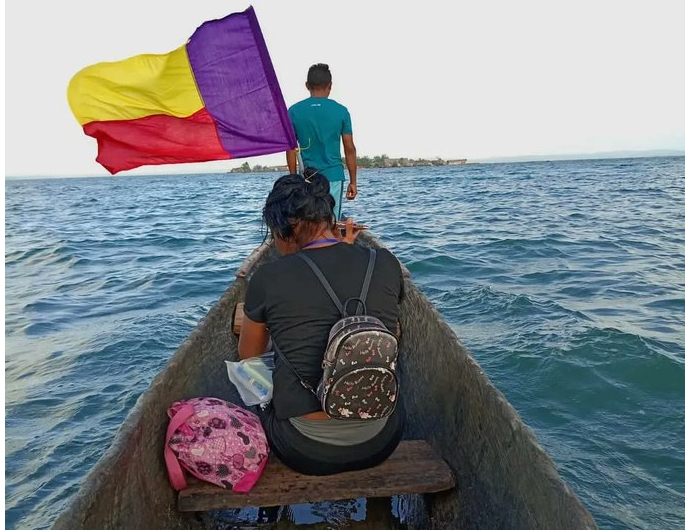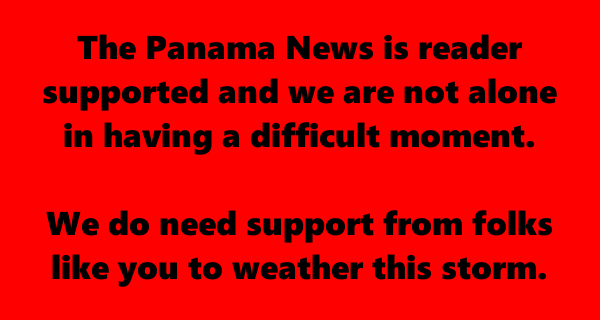From the Panameñista Twitter feed.
The primary season ends today – but it won’t be the
final word on who’s running in the general election
by Eric Jackson
From seven in the morning until two this afternoon, more than a quarter of a million members of the Panameñista Party will be eligible to cast their primary votes. All indications, including the party’s own projections, are that most of the members won’t vote today.
It’s a primary, and if by general election turnouts Panamanian voters tend to be bigger participating supporters of democracy than their US counterparts, like up there primaries down here generally draw lower numbers of electors. Also, it’s continuation primary rather than a decision at a crossroads primary. Former Panama City mayor, legislator and last time’s presidential candidate José Isabel Blandón Figueroa will again be the party’s main standard bearer. That is, unless the honor gets negotiated away in coalition talks between now and the end of September.
It used to be that the Panameñistas were the largest political organization in Panama, more vulnerable to outside forces than to other parties as such. An offshoot of the Colombian-era Liberals that arose in the 1920s as the racist Accion Comunal movement, it was led by the Arias Madrid brothers, Harmodio and Arnulfo. A platform of getting rid of the West Indians, the Chinese, the Arabs and the Sephardic Jews did not much faze Uncle Sam at the time, but Panama drawing close to Europe’s fascist powers during the 1932-38 Harmodio Arias presidency was another matter. After a violent campaign in which his main opponent withdrew out of concern for personal safety, Arnulfo Arias was elected president in 1940.
With German U-boats prowling the Caribbean and attacking US Lend-Lease shipments to the British when possible, Washington was not amused by one of Hitler’s and Mussolini’s friends being president of Panama. (During his brother’s administration Arnulfo was sent as a diplomat to Europe and made the personal acquaintances. The Americans didn’t so much promote a rival party as lobby other powers within the Panamanian state — legislators and the National Police. Within the latter the found their strongman behind the scenes, then-Colonel José Antonio Remón Cantera. Arnulfo flew off to Havana to visit his eye doctors, not bothering to notify, much less get the permission of, the National Assembly. The law required the president to get the legislature’s permission to leave the country, the US ambassador went to the vice president to notify him of this US interpretation of Panamanian law, the National Assembly was canvassed and given some assurances, and Remón was the enforcer in the October 1941 coup that sent Arnulfo Arias into a longer-lasting exile than planned.
Rémón, who later ran for president only to be elected and then assassinated, embarked on a run of being the power behind the presidency for the duration of US involvement in World War II. He founded this tradition of social reforming but moderately capitalist militarism out of which grew, during the 1968-89 dictatorship, the Democratic Revolutionary Party (PRD).
Arnulfo Arias was twice again elected, only to be twice more ousted in coups d’etat. After his death the Panameñista Party that he founded elected three presidents of Panama: Guillermo Endara Galimany (1989-94), Arnulfo’s widow Mireya Elisa Moscoso Rodríguez and Juan Carlos Varela Rodríguez. Endara was seen by many as a puppet of the US forces and had the unenviable task of running a country devastated by both the death and destruction of the 1989 invasion and the lasting hardships from the US economic sanctions of the Noriega years. Moscoso divided her administration into little fiefdoms, some of which were well run, others not, and others noteworthy centers of corruption and nepotism. In her time she managed to grab a choice estate on the Pacific in Pedasi, arguing that the property had been seized from her family years before. Varela awaits an October trial date, along with his predecessor and one-time running mate Ricardo Alberto Martinelli Berrocal and many others, for allegedly taking and laundering Odebrecht bribes.
Blandón comes to primary day as the default presidential candidate, but as the guy who came in fourth with 10.84 percent of the vote in 2019 and has registered single digits in most presidential polls conducted this year. The most talked-about possible coalition partner would be Cambio Democratico’s Rómulo Roux, who came in a close second in 2019. There are other possibilities, Ricardo Martinelli and the PRD’s Gaby Carrizo not among them.
Today’s turnout would be one more number in calcuilating the strength of the Panameñista Party’s bargaining position. If half the party members cast ballots, that would be an unexpectedly strong showing. If only a quarter of the membership votes, it argues for Blandón as a vice presidential nominee on a coalition ticket at best.
A lot of the down-ticket spots are reserved for designation by the party leadership, which reduces the chances of down-ticket primary surprises.
Contact us by email at fund4thepanamanews@gmail.com
To fend off hackers, organized trolls and other online vandalism, our website comments feature is switched off. Instead, come to our Facebook page to join in the discussion.
These links are interactive — click on the boxes











